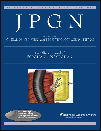Dramatic Changes in the Prevalence of Helicobacter pylori Infection During Childhood: A 10-year Follow-up Study in Russia
Sponsored by the SCIMEDX Corporation and the Digestive Diseases Section at Baylor College of Medicine.
ABSTRACT
Background:
The prevalence and rate of acquisition of Helicobacter pylori infection in children from developing countries is higher than in developed countries. This phenomenon has been related to differences in socioeconomic status, sanitation, and household hygiene. Russia is in the process of transforming from an underdeveloped to a developed country.
Aim:
To examine the effect of recent improvements in standards of living on the prevalence of H pylori in Russian children.
Patients and Methods:
We conducted 2 cross-sectional studies among children in St Petersburg, Russia. The first study was conducted in 1995 and the second was conducted a decade later. H pylori status was evaluated by the same enzyme-linked immunoassay method for anti-H pylori immunoglobulin G. Demographic data were obtained from each individual, and socioeconomic class was assessed by the education level of the mother and family income.
Results:
In 1995 the overall prevalence of H pylori infection was 44%; 10 years later it had decreased to 13%. In both studies, the prevalence increased with age. In 1995 the prevalence was 30% among children younger than 5 years. A decade later the prevalence in the same age group was 2% (P = 0.001). The age-specific prevalence of H pylori infection increased significantly with age in both study periods. During 1995 the prevalence of the infection increased from 30% at age <5 years to 48% in the age group 15 to 19 years (P = 0.001). In the 2005 study the prevalence of the infection increased from 2% at age <5 years to 25% in the age group 15 to 19 years (P = 0.001). The crude and the age-adjusted odds ratio risk of infection in children showed an inverse correlation between the mothers' and fathers' educational levels and H pylori seropositivity (OR 1.8, 95% CI 1–3.2; P = 0.06). No associations were found between the prevalence of H pylori and any factor tested, including sex, type of dwelling, income, or the number of people living in the home.
Conclusions:
Improvements in standards of living in Russia have resulted in a marked reduction in H pylori transmission. Different rates of acquisition of H pylori form the basis for the differences in prevalence of infection between and among populations. The change in the prevalence of H pylori within 10 years among the Russian population is an example of how sensitive H pylori acquisition is to improvement in standards of living. Increased use of anti-H pylori eradication therapy played an important role in the reduction of the prevalence of H pylori infection.




